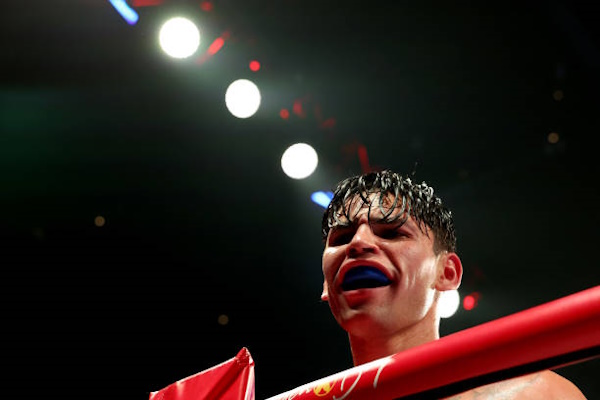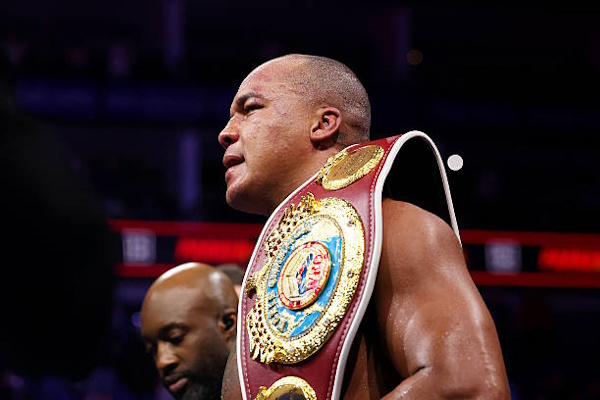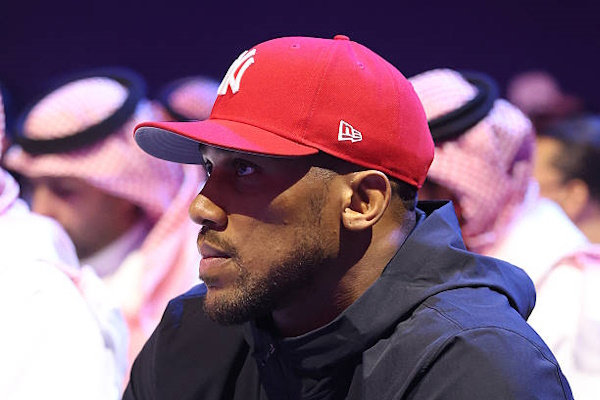Ryan Garcia has reportedly tested positive for the banned substance of ostarine following his April 20th win over Devin Haney, marking a tragic end to a chapter that featured a wide slew of ups-and-downs, as well as plenty of surprises following weeks of antics from Garcia that turned out to be manufactured. With both Garcia and Haney being subjected to VADA testing on the day before, during and after their fight, it was determined that Garcia held ostarine in his system on April 19th and April 20th.
ESPN’s Mike Coppinger was the first to break the story, having gained access to a copy of a letter from the Voluntary Anti-Doping Association (VADA)―that was sent to both Ryan Garcia (25-1, 20 KO’s) and Devin Haney (31-1, 15 KO’s)―detailing what Garcia tested positive for, and when. According to the letter, the tests pertained to urine samples that were conducted the day before the fight, and the results revealed the banned substance ostarine to have been in Garcia’s urine samples on April 19th and on April 20th―the day of the fight. Both Garcia and Haney voluntarily signed up to the VADA program months prior to their April 20th super lightweight/junior welterweight bout.
As results typically take 72 hours to be revealed after first being collected, according to anti-doping advocate Victor Conte, VADA was not capable of revealing the nature of Garcia’s positive drug test until after the fight. The typical effects of ostarine is said to lead to improved muscle gain and strength while cutting weight; effects that can therefore be attributed to Garcia’s dominant physical display during his April 20th match which saw him knocking down Haney on at least three official occasions.
As Garcia’s positive test was determined by a A-sample, the initial sample used to detect the use of prohibited substance, Garcia has been given 10 days to request the testing of a B-sample―with B-samples typically used to confirm the results of the A-sample.
Additionally, with the positive drug test for ostarine already confirmed, another sample detected the banned substance of norandrosterone, but the result has been referred to as “questionable” and the sample will undergo thorough testing to determine whether and which substance was found.
Since the reports of his positive test[s] came out, Ryan Garcia has responded in turn with his own videos and social posts where he vehemently denied the intentional use of performance-enhancing drugs (PEDs).
“I came on here to address the bullf****** sh** claim that I cheated,” Garcia stated in a video released on Twitter/X. “Everybody knows that I don’t cheat.
“What can I say? Why didn’t they come out with this before the fight if they found it before? Why would they let me step into the ring as a cheater, and then come out with a victory, and then post this.
“Again, these are people that are trying to attack me for whatever reason but no weapon against me shall prosper. I’ve never taken steroids in my life―I don’t even know where to get steroids, at the end of the day. I barely take supplements.“
Garcia also attributed the positive result due to the use of the supplement known as “Ashwagandha” which derives its properties from a herb-type plant of the same name, and is said to be most often used to treat conditions such as stress and anxiety. However, despite Garcia’s claims, Ashwagandha is not typically known to harbor the substance of ostarine, and neither the supplement or the plant is banned from use according to the World Anti-Doping Agency (WADA).
All eyes are now on the New York State Athletic Commission (NYSAC) who sanctioned the Haney-Garcia bout, and are expected to handle this matter accordingly. So far, Ryan Garcia has yet to receive a suspension of any kind by NYSAC as the governing body is set to investigate the matter, and Garcia will be allowed to prove his innocence―with his best opportunity to do so presented through the B-sample he can request to be tested.
Ryan Garcia’s alleged use of Ashwagandha―which he claimed led to the banned substance of ostarine entering his system―may not help his case depending on whether the NYSAC employs a “strict liability” policy. A “strict liability” policy determines that athletes are held responsible to the fullest extent regardless of whether they intentionally or unintentionally used a substance that is regarded as banned or illegal.
In summary, the Haney-Garcia April 20th bout has far exceeded expectations from the build-up to the fight to its aftermath, with Ryan Garcia having first endured criticism and skepticism for his behavior prior to the match, to then receiving a significant boost in reputation due to his underdog status going into the fight, only for him to now be potentially regarded as a “drug cheat” for the rest of his career.
In the coming weeks, more will be revealed as to the exact repercussions that will stem from VADA’s positive drug test pertaining to Ryan Garcia, threatening to overturn a blooming career that had been on the upswing barely two weeks prior after already enduring numerous confusing and mindboggling twists and turns in the past couple of months.
If Ryan Garcia is held responsible for the use of performance-enhancing drug, there is a good chance his win over Haney will be overturned with the match ruled as a no-contest. However, with it still being unknown how efficient NYSAC is when it comes to matters of doping, there is no certainty as to whether there will be any repercussions if Garcia is found guilty of drug use; and depending on the NYSAC’s strictness, Garcia might still be cleared if he uses a similar defense to what Dillian Whyte and Alycia Baumgardner have used recently, with both fighters claiming they unknowingly ingested the substance through a supplement of some kind―which led to them being controversially and debatably cleared for intentional use of performance-enhancing drugs.



